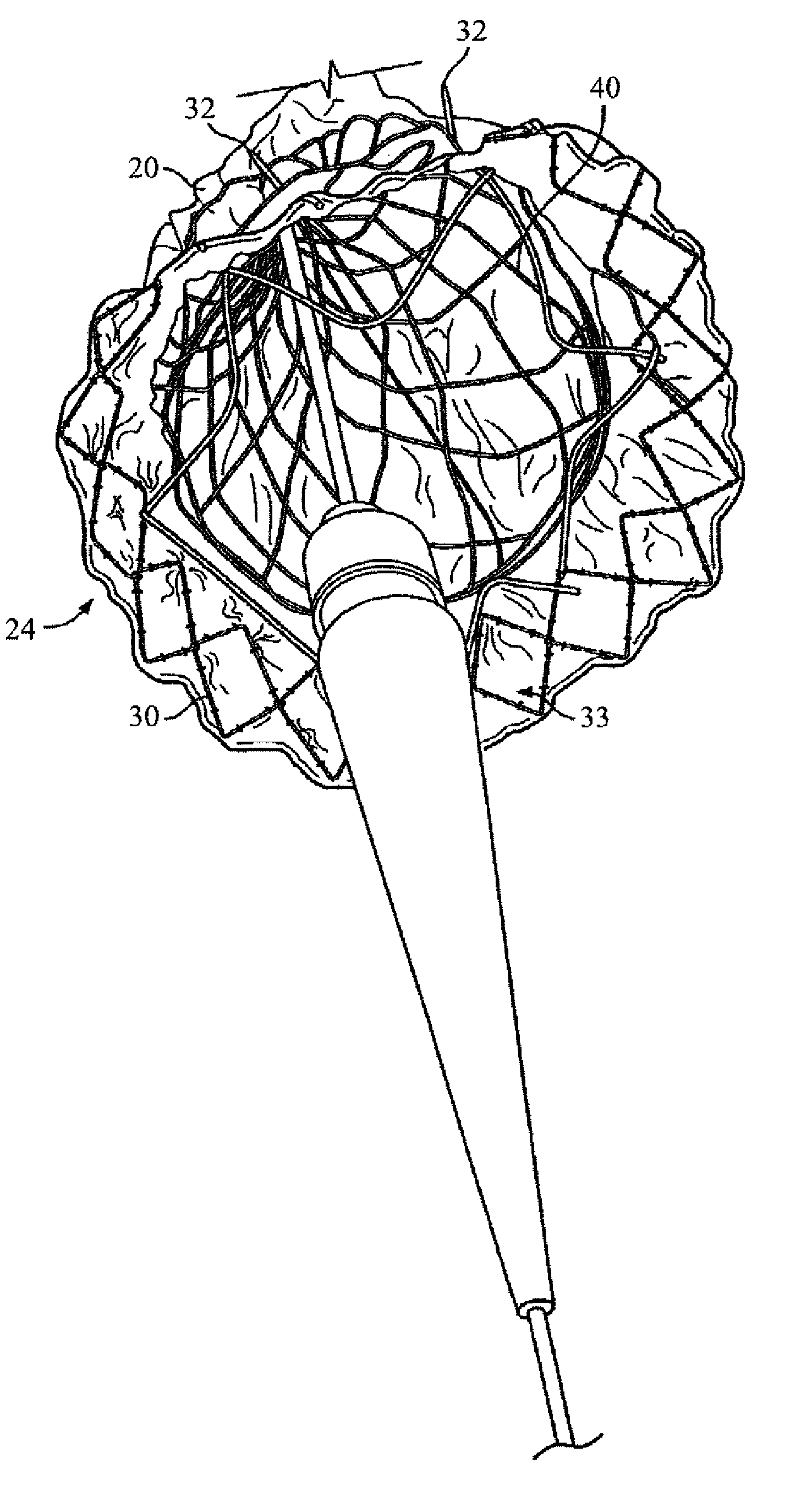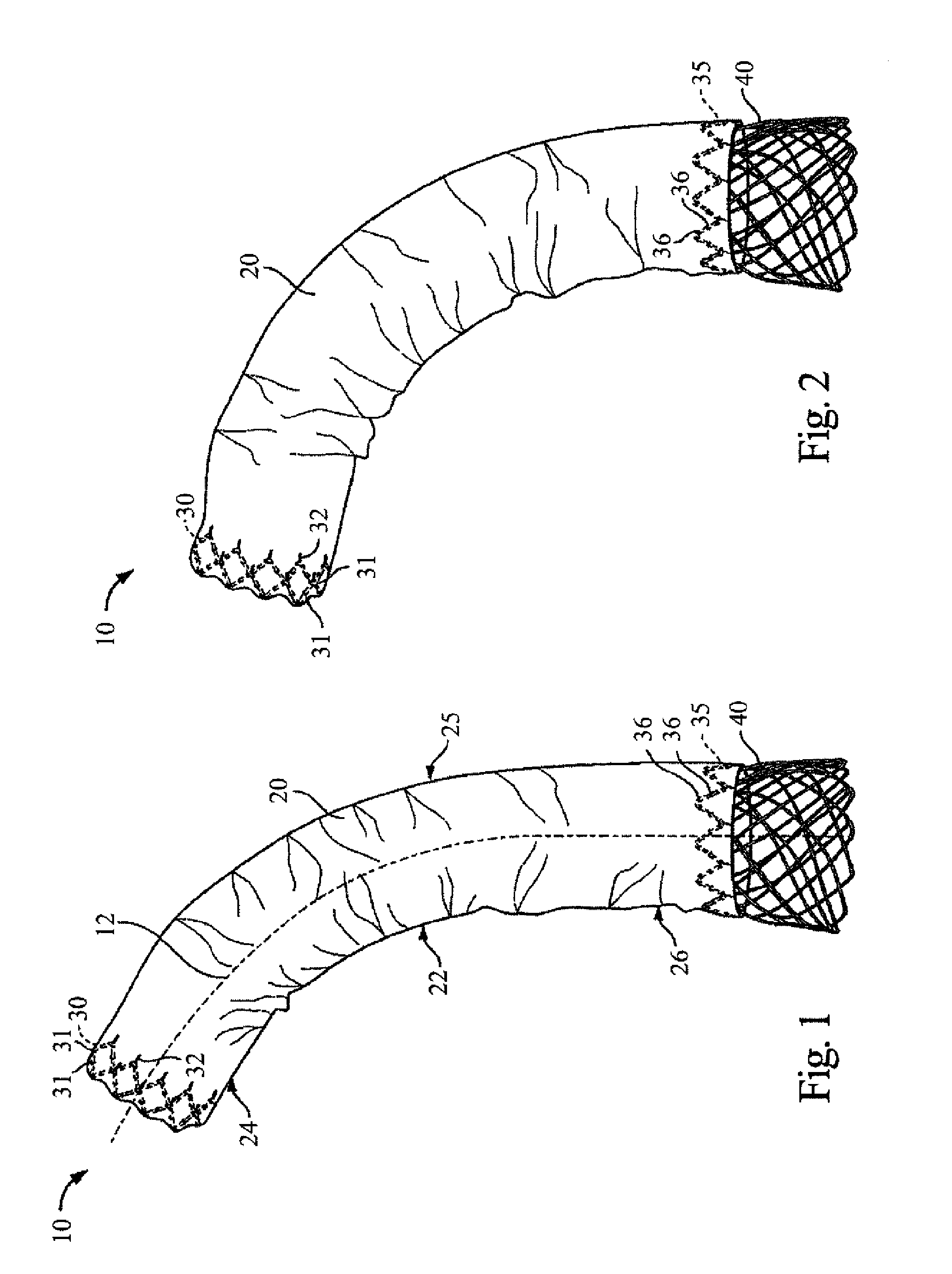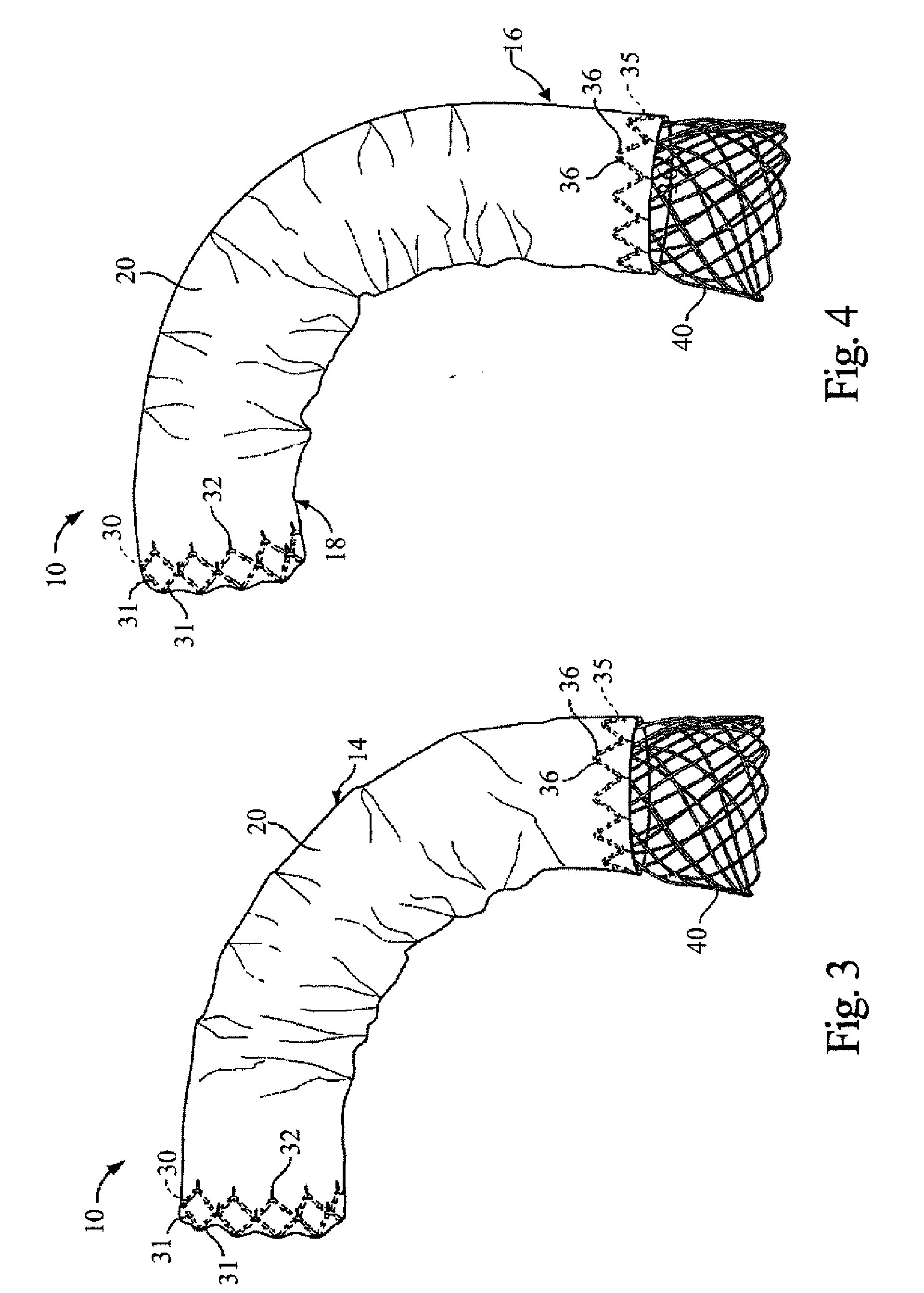Method for Deployment of a Stent Graft
a stent and graft technology, applied in the field of stent graft deployment, can solve the problems of inaccurate positioning of the stent graft with respect, preventing or restricting the acceptance of endovascular treatment or procedure, unfavorable clinical consequences, etc., to prevent or limit undesirable stent or stent graft movement and/or migration, accurate prediction or determination, and accurate positioning of the sten
- Summary
- Abstract
- Description
- Claims
- Application Information
AI Technical Summary
Benefits of technology
Problems solved by technology
Method used
Image
Examples
Embodiment Construction
[0131] The present invention provides a method for repairing and / or treating aneurysms, such as abdominal aortic and thoracic aortic aneurysms. The method facilitates accurate positioning of the stent or stent graft at the desired lesion site while preventing or limiting undesirable stent or stent graft movement and / or migration. Further, a post-deployment placement of the stent or stent graft with respect to the lesion site can be accurately predicted or determined to prevent undesirable blockage or occlusion of branch vessels.
[0132] The stent graft may be deployed from a distal end (related to a position of a patient's heart) to the proximal end of the stent graft. The distal end is commonly referred to as the “bottom” position and the proximal end is commonly referred to as the “up” position. By deploying the stent graft in a “bottom-up” procedure, a distal end of the stent graft is precisely and accurately positioned at the desired lesion site and a post-deployment placement of...
PUM
 Login to View More
Login to View More Abstract
Description
Claims
Application Information
 Login to View More
Login to View More - R&D
- Intellectual Property
- Life Sciences
- Materials
- Tech Scout
- Unparalleled Data Quality
- Higher Quality Content
- 60% Fewer Hallucinations
Browse by: Latest US Patents, China's latest patents, Technical Efficacy Thesaurus, Application Domain, Technology Topic, Popular Technical Reports.
© 2025 PatSnap. All rights reserved.Legal|Privacy policy|Modern Slavery Act Transparency Statement|Sitemap|About US| Contact US: help@patsnap.com



